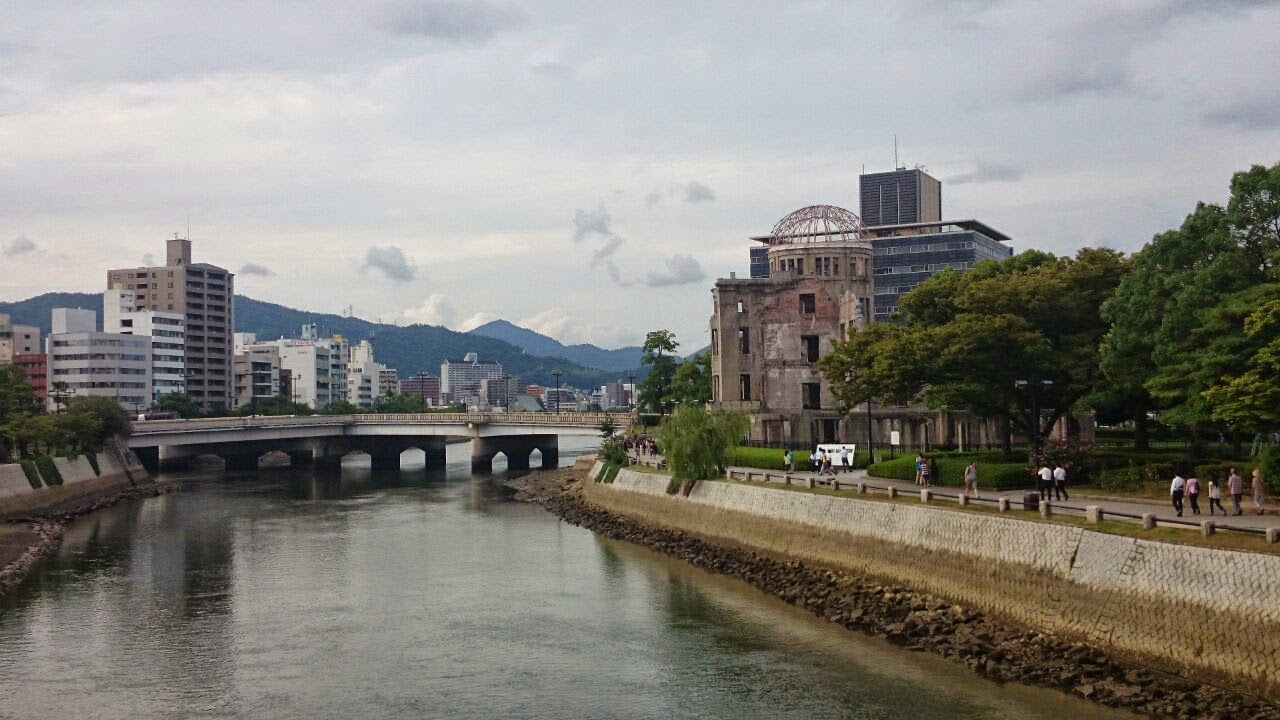by The Great Teachers Japan
I visited Hiroshima on August 28th because there was an art exhibition called "Jimmy Tsutomu Mirikitani (1920-2012): The First Retrospective in Hiroshima" in Hatsukaichi City.
Let'me introduce this artist briefly.
Jimmy was born in Sacramento, California, in 1920 and raised in Hiroshima. At the age of 18 he returned to the U.S. to pursue a career in art and escape the growing militarism in Japan. He was living with his sister Kazuko and her family in Seattle when the Japanese attacked Pearl Harbor in 1941.
Executive Order 9066 (the order by Americana President, Roosevelt) forced Jimmy and his sister to leave their houses and move to separate internment camps hundreds miles apart (during the war, approximately 120,000 Japanese or Japanese American living on the West coast were forced to move to one of 10 internment camps set up throughout the nation).
When the government required internees, especially the young Japanese American, to take a loyalty test (the test was to make sure whether they were qualified enough to serve the US military), the camps where Jimmy was interned became center where those considered "disloyal" were congregated. Hundreds and thousand of them renounced their U.S. citizenship to protest the violation of their constitutional rights. Jimmy was one of these renunciants.
Jimmy later recounted his thoughts upon hearing of the destruction of Hiroshima by a U.S. atomic bomb; "I grew up in Hiroshima. Beautiful! Forty-seven kids my school. Only seven left. All war died. Everything ashes. Just like moon."
Jimmy arrived in New York City in the early 1950's to try to resume his art career. For years, he traveled the East Coast doing seasonal work in resorts, summer camps and country clubs. While cooking at a restaurant on Long Island, he met Jackson Pollock (1921-1956, USA, known as a action painting).
Jimmy's U.S. citizenship was finally restored in 1959, but by then he had moved so often that the government's letter never reached him. Eventually, he became a live-in cook on Park Avenue in New York. But when his employer died in the late 1980's, he was suddenly without a home or a job. Within a year, he was living in Washington Square Park, willing his artwork to survive.
In 2001, he met a film maker Linda Hattendorf, who was impressed by his artwork. When the 9/11 occurred, she put him up and helped apply for Social Security and housing benefits. In 2002, he moved into a assisted-living retirement center run by Village Care of New York. Later that year, he was reunited with his sister, Kazuko, for the first time in 60 years.
In 2004, the documentary film called "The Cats of Mirikitani" was released. Not only in America, but also so many people from different cultural background in various corner of the world were moved by this hidden personal history of this senior homeless man. Jimmy's philosophy was always the same: "Make Art, Not War".
You can find out more about the information on this film.
After visiting his exhibition, I also visited Miyajima Island (where Jimmy often spent his childhood) and on the island there is a World Cultural Heritage called "Itsukushima Shinto Shrine" (first built in 593 and remodeled in 1168).
Also, I went to the Atomic Bomb Dome for the first time. It was my first time to observe this historical building in closer look, and I felt the great tragedy in Hiroshima though the a-bomb was dropped way back, 69 years ago. I could see lots of rubble still left carelessly underneath the dome.
Finally, I visited the Hiroshima Peace Memorial Museum. I was so impressed that so many visitors were from foreign countries, especially China and Korea.
The history tells us what our obligation is as an educator, as a citizen, and also as a human-being.











No comments:
Post a Comment